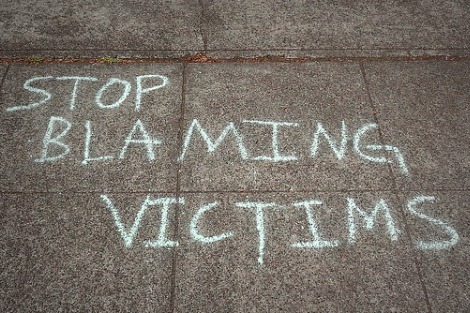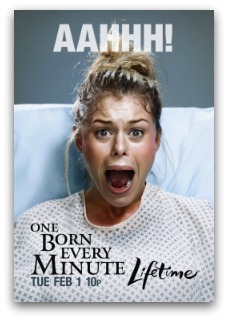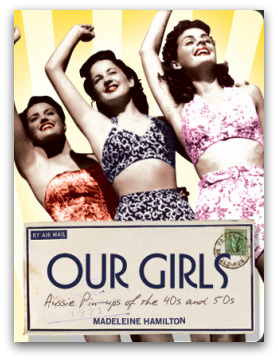Keywords: Madeleine Hamilton
-

EDUCATION
- Madeleine Hamilton
- 11 January 2018
2 Comments
The mood was subdued at the gates of our small Catholic primary school at 3:30pm on Wednesday. Ten per cent of our school's students have an autism diagnosis, and for their parents who had read Pauline Hanson's comments to the Senate that afternoon, those familiar feelings had been activated yet again.
READ MORE 
-

EDUCATION
- Madeleine Hamilton
- 22 June 2017
19 Comments
The mood was subdued at the gates of our small Catholic primary school at 3:30pm on Wednesday. Ten per cent of our school's students have an autism diagnosis, and for their parents who had read Pauline Hanson's comments to the Senate that afternoon, those familiar feelings - dismay at the ignorance and lack of empathy of some people, worry for the future, and defiant pride in their diverse children - had been activated yet again.
READ MORE 
-

AUSTRALIA
- Madeleine Hamilton
- 24 August 2016
14 Comments
The response from police and others in authority to recent cases involving the abuse or exploitation of adolescent female sexuality is depressingly reminiscent of attitudes held more than 50 years ago. While it was no defence to argue that the girl had consented, if it could be proven she had had consensual intercourse with other men previously, the offender could be acquitted. Consequently, in carnal knowledge trials, girls were frequently accused of having rich histories of sexual activity.
READ MORE 
-

AUSTRALIA
- Madeleine Hamilton
- 07 September 2015
8 Comments
While at Melbourne's Winlaton Youth Training Centre, many became victims of sexual and physical assaults by staff and other girls. This was how the state of Victoria looked after its most vulnerable girls, who following their incarceration were simply expected to get on with their lives. Except many didn't. As the list of witnesses for the Royal Commission hearing was being finalised, I was told: 'There's going to be a lot of very angry and re-traumatised mothers and grandmothers.'
READ MORE 
-

AUSTRALIA
- Madeleine Hamilton
- 05 August 2013
20 Comments
Unlike their male counterparts, 'delinquent' girls who ran away from dangerous environments were frequently incarcerated because it was perceived that they might be sexually active and fall pregnant. Their stories demonstrate the wide-ranging effects of ruptured family life and subsequent institutionalisation, and warn against the future unnecessary incarceration of vulnerable youth.
READ MORE 
-

ARTS AND CULTURE
- Madeleine Hamilton
- 13 November 2012
4 Comments
When I'm scrabbling around wiping up cereal under the baby's highchair and she's twisting her milky fingers into my hair, what good is it to recall that it is due to the privileging of men's professional work and their superior earning power that it is me, not my husband, who is being subjected to this assault?
READ MORE 
-

AUSTRALIA
- Madeleine Hamilton
- 31 August 2012
15 Comments
The post-war migration policy favoured single men as labour for the burgeoning heavy industries. By the mid-1950s thousands of lonely male migrants populated the cities, and many local women found them threatening. Like those women, Slutwalk participants defend their right to walk the streets wearing what they want without being harassed.
READ MORE
-

AUSTRALIA
- Madeleine Hamilton
- 16 December 2011
23 Comments
When she had her first baby at 18, her neighbour asked if she was trying to make a buck from the baby bonus. Given the liberalisation of abortion laws, pregnant teens are accused of deliberately ruining their lives or ripping off the public purse if they choose to continue their pregnancies.
READ MORE 
-

ARTS AND CULTURE
- Ellena Savage
- 22 January 2010
7 Comments
When we think of pin-up girls from the '40s and
'50s, we might assume they were desperate women who unwittingly participated in an industry that exploited them. In her new book, Madeleine Hamilton argues they were in fact 'trailblazers of the sexual revolution'.
READ MORE 
-

AUSTRALIA
- Madeleine Hamilton
- 09 January 2009
This year marks the 60th anniversary of the first showing of Christian Dior's New Look fashion designs in Sydney. After years of wartime material restraints the New Look offered Australian women a fresh way of expressing their individuality and sensuality through fashion. (March 2008)
READ MORE 
-

AUSTRALIA
- Madeleine Hamilton
- 27 March 2008
3 Comments
This year marks the 60th anniversary of the first showing of Christian Dior's New Look fashion designs in Sydney. After years of wartime material restraints the New Look offered Australian women a fresh way of expressing their individuality and sensuality through fashion.
READ MORE 
-

CONTRIBUTORS
- Madeleine Hamilton
- 17 May 2007
Madeleine Hamilton wrote her PhD thesis on the phenomenon of the Australian 1940s and 1950s pin-up girl. Previous articles have appeared in Lilith: A Feminist History Journal, Eras, and Space: New Writing.
READ MORE